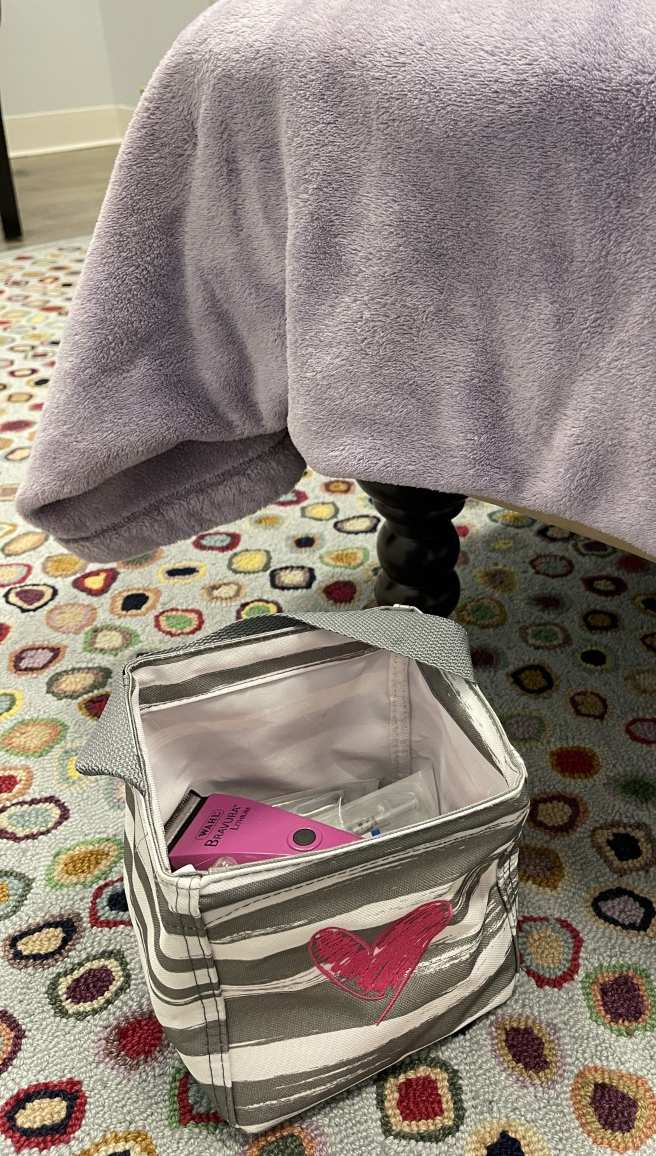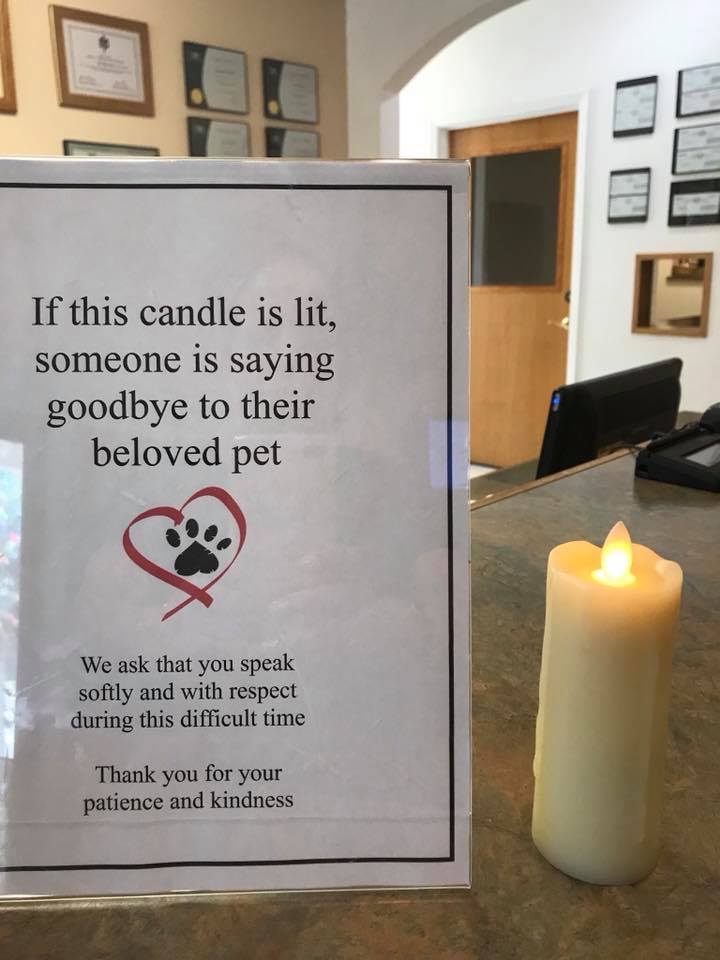The experience of euthanizing a beloved cat stays with a caregiver forever. As practitioners, it is critical to understand the psychological and emotional impact of this end-of-life procedure. To make the experience as peaceful and professional as possible, it is important for certain steps to be followed by both veterinary staff and caregivers. If euthanasia can be done in such a way as to minimize anxiety or pain in the patient, the transition will be much easier for all involved.
Four Key Steps for Easing Euthanasia
Step 1: Deciding Upon Euthanasia
A caregiver’s experience with euthanasia begins when first considering it as a treatment option.
- Introducing euthanasia as a treatment option
- It is appropriate for a veterinarian to introduce humane euthanasia as a treatment when a cat’s functional and comfortable life carries a guarded or poor prognosis. Some clients may not feel comfortable bringing it up out of fear of judgment, especially if they cannot afford treatments or diagnostic tests. They may also be concerned that you will be angry with them for suggesting it.
- Deciding when to euthanize a pet is a very difficult choice for most people. Some caregivers may ask the veterinarian to make the decision. Providing clear and nonjudgmental guidance in terms of what to consider is helpful in empowering the client to make their own choice.
- Scheduling the appointment
- Ideally, the veterinary team should be updated about the cat’s health status and informed that the caregiver might be calling in the next few days. If possible, they should not be put on hold.
- Also, make sure the team conveys empathy, so the caregivers know that you care.
- First, ask your clients when they prefer to schedule the procedure.
- If possible, try to schedule the procedure when the veterinary practice is quiet, or when the veterinarian will have enough time not to be rushed by later appointments.
- Try to make arrangements for body care with the caregivers prior to the procedure. Provide them with options for deciding what they would like to do with their loved one’s remains.
- Let caregivers know the cost of euthanasia and aftercare in advance.
- If euthanasia needs to be done immediately, find a quiet location in the practice for caregivers and their cat to spend time together.
- Ideally, the veterinary team should be updated about the cat’s health status and informed that the caregiver might be calling in the next few days. If possible, they should not be put on hold.
Step 2: Preparing for Arrival
Several steps can be taken prior to the euthanasia appointment that can ease the caregiver’s and patient’s experience. This includes premedicating the cat at home and setting up a peaceful space at the practice where the family can say goodbye to their loved one in private.
- Premedication
- Premedicating a cat at home allows for minimal restraint upon arrival at the veterinary practice. It also lessens the likelihood of adverse events following death, such as muscle twitching or agonal breaths.
- Drugs should be administered at the appropriate time before peak clinical effect is desired (see table). For example, gabapentin should be administered 2-3 hours before the cat is placed in the carrier for travel or before an at-home appointment.
- If a caregiver is unable to easily orally medicate the cat, then don’t recommend it. Remember, it is important to not create a stressful experience for the cat, as well as impart a lasting negative experience for the caregiver.
- If it is too stressful for the cat to receive medication before they arrive, the veterinary team should administer a sedative and anti-anxiety medication as soon as they arrive.
Premedication Options and Dosages (Download table)
| Premedication | Dosage | Time to Peak Clinical Effect |
| Gabapentin | 10-40 mg/kg PO | 1-2 hours |
| Trazodone | 100 mg/cat PO | 2 hours |
| Lorazepam* | 0.125-0.25 mg/cat PO | 30 minutes |
| Buprenorphine | 0.02-0.03 mg/kg TM | 30-45 minutes |
PO = Per os or by mouth
TM = Transmucosally
- Preparing the space
- Before caregivers and their cat arrive, the veterinary team should set up a “comfort room” in the practice where the caregiver can sit with their loved one. Ideally, the space would include:
- Soft lights
- Low noise
- Privacy
- Enough seating for all family members
- Provide soft, soothing blankets to wrap the patient in after the procedure is complete.
- Stock a small basket with supplies for caregivers, including:
- Tissues and/or wet wipes
- Bottles of water
- Before caregivers and their cat arrive, the veterinary team should set up a “comfort room” in the practice where the caregiver can sit with their loved one. Ideally, the space would include:

- Create a peaceful ambiance
- Dim the lights
- Set up a battery-operated candle
- Consider the location where you will have the needles, syringes, and other equipment to use for the procedure. Seeing these items can be upsetting to the caregivers, so it may help to keep these items in a travel basket or bag.
- If the caregiver chooses to have time alone with their loved one, provide a wireless doorbell in the room so the caregiver can notify the veterinary team when they are ready to begin or when they are ready to leave.
Step 3: Receiving Clients at the Hospital
When caregivers arrive at the veterinary practice, it is important that the veterinary team is prepared to make the caregivers’ experience as calm and clear as possible.
- Upon arrival
- Immediately escort caregivers and their cat into the comfort room.

- Explain the process
- Talk to caregivers about what to expect.
- Explain the changes that will take place in the cat as the procedure progresses.
- Let caregivers know how long it will take for the sedative to take effect.
- Advise caregivers that cats’ eyes will not automatically close when they are sedated or once they have passed.
- Offer options for when they will say a final goodbye:
- Before the procedure starts
- Once the cat is completely sedated
- After the cat has passed away
- Offer caregivers some time with their cat before the euthanasia and/or after the cat has passed away. Be prepared, as this may end up being a short or long time.
- Some caregivers will spend hours in the room with their cat.
- Some caregivers want the cat removed as soon as the euthanasia is complete.
- Inform others in the practice
- Ensure that others in the practice environment are aware that euthanasia is taking place in order to provide privacy and offer kindness.
- Inform other clients that euthanasia is occurring by placing a battery-operated candle and note in the lobby. Please see the Client Resources section for a free sign to print and use for your practice.
- Place an overstuffed animal in the treatment room so the rest of the veterinary team knows euthanasia is occurring.
Step 4: The Euthanasia Procedure
The euthanasia procedure can be performed in the comfort room where clients have been spending their final moments with their cat.
- Early steps
- Keep the caregivers and cats together at all times during the appointment until the clients are ready to separate. The human-animal bond should not be broken.
- Veterinarians can use a small basket to carry the sedation and euthanasia materials into the room. It is not necessary to put in a catheter.
- Sedation
- If a client can easily administer an oral premedication to their cat before the appointment, it can result in less anxiety and discomfort for the injectable sedatives that will subsequently be given by the veterinarian.
- Additional sedatives to be given intramuscularly (IM) or subcutaneously (SQ) should provide an acceptable level of anesthesia to minimize any pain before administering the euthanasia solution. Please see the Euthanasia Process section for a table of pre-sedation drug combination protocols.
- Administering the euthanasia
- Learn how to become comfortable with caregivers holding their cat during the procedure.
- Make this opportunity available to those who want it.
- Try to stay out of the way of the caregiver.
- Always check the patient’s heart after administration.
- Ideally, the veterinarian should stay in the room until the cat has passed and death is confirmed by auscultation.
- Utilize the Euthanasia Process section of this Toolkit for additional information.
- Learn how to become comfortable with caregivers holding their cat during the procedure.

- Be attentive to your words
- It is normal for clients to want to reminisce about happier times while waiting for the sedative to take effect.
- Be comfortable with silence for those who prefer it.
- Confirming death can be done with beautiful statements such as “She has her wings.”
- Verbally reassure clients that they are making the best decision for their cat.
- Let clients know they can take as much time as they wish with their loved one after the procedure is complete.
